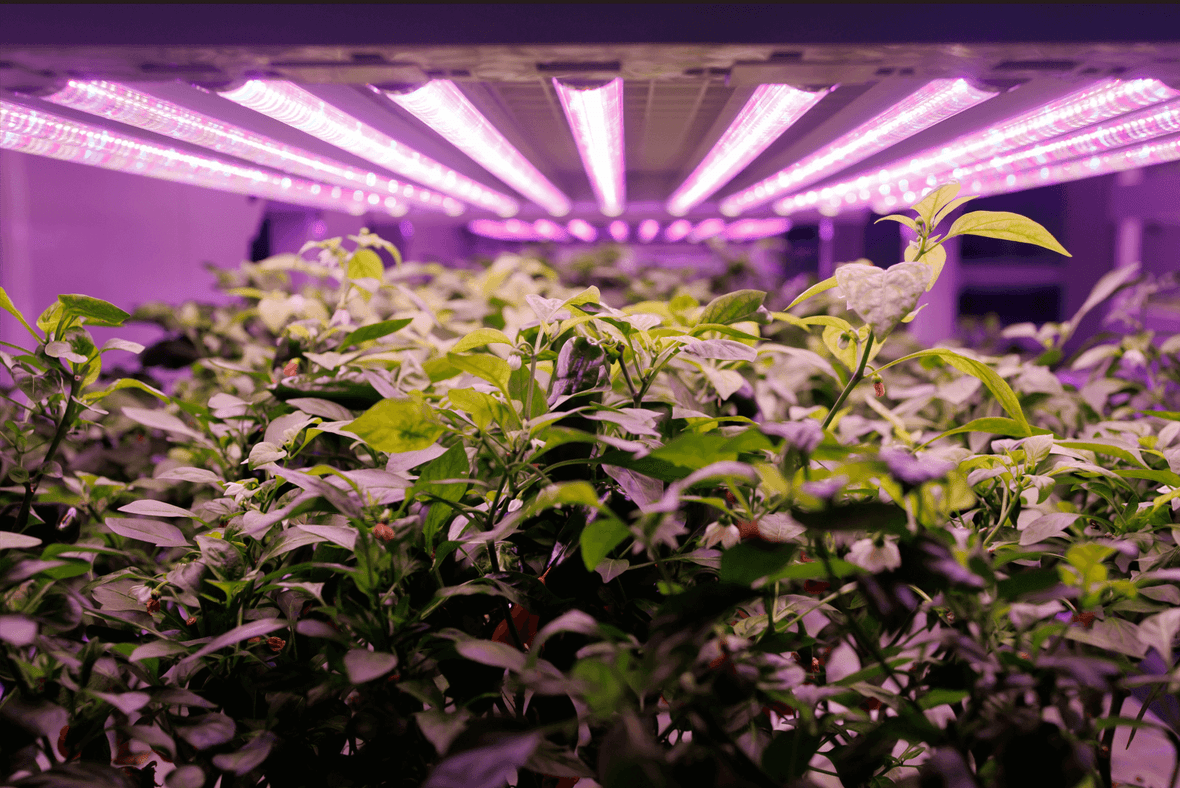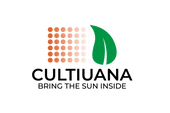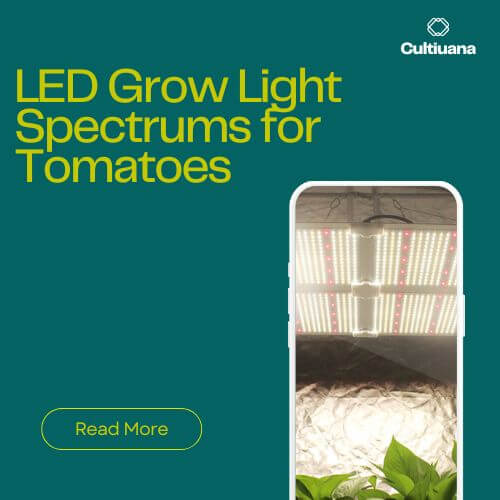
How Long To Leave UV Light On Plants
Everything in this world has some purpose. There is a strong misconception that UV light damages plants and provides no benefit. In reality, it can be used to the advantage of plants. UV light provides a natural shield against the effect of sunlight.
In other words, UV lights created a sunblock against the upcoming UV lights. Now, everyone must understand the importance of UV lights for plant protection.
When growing indoors under grow lights, the ultraviolent light developed compounds in the plants to compensate for the excessive UV light exposure. The plant creates additional compounds which are helpful for other purposes.
Here in this article, we bring a quality analysis of UV lights, their different types, and their importance in plant growth. You will get to know how long to leave UV light on plants.

What is UV light and When to Use UV Light?
Ultraviolet is a type of electromagnetic radiation with wavelengths ranging from 10 nm to 400 nm, which is shorter than visible light but longer than X-rays. UV radiation is present in sunlight and represents around 10% of the total electromagnetic energy emitted by the Sun. It has different types, but we will only discuss those types here which are essential for plants.

UV-A
UV-A light has a wavelength between 315 and 400. This wavelength is not absorbed by the Ozone layer and is the least visible UV. UV- A light is beneficial for plant production as it can increase the output to a higher level because of an increase in photosynthesis by 12%. It helps create antioxidants like flavonoids and phenolic compounds, which are beneficial in treating cancer, heart disease, neurodegenerative diseases, and other dangerous diseases. It can boost the tastiness of your plants. Plants that take UV-A light become more resistant to fungal disease.
UV-B
UV-B light has a wavelength between 280 and 315. It is medium wave UV which Ozone primarily absorbs, but the part it does not absorb becomes available for plants. UVB in low quantities provides your plants with that fantastic aroma and fragrance from the oil they make. UVB has been proven to increase the formation of THC and CBD in specific plants. Trichomes are the sunscreen that plants produce, and the higher the trichome growth, the greater the THC and CBD range. It enhances the germination process of indoor plants. It can cause sunburn, which damages the plant.
UV-C
UV-C has a wavelength between 100 and 280. It is short wavelength UV which is entirely absorbed by Ozone. It does not occur naturally on earth. It is available in many artificial forms. Plant growers must know which amount they have to use in a specific stage of the plant. Otherwise, it will burn the plant. The main benefit it gives is to increase branches' size, which will increase the production of some plants like cannabis. It reduces the plant height and can affect flowering time. I will help plants fight microorganisms.
When To Use UV Light? On Which Stage?

As we explained earlier, UV light benefits plants, but you must know how and when to use it. Plants need UV light in the developmental to the flowering stage to complete their proper necessity.
Although it is important in the full-grown stage of plants, the most critical stage is the developmental stage. When growing seeds indoors, UV light might improve the germination process.
UV improves plants as they are transplanted to more powerful light sources. UV exposure during the early phases of plant development minimizes shock time and accelerates production.
UV Light During Flowering
You can use UV-B only during the last few weeks, and while it will be preferable not to use it at all, people will miss out on the full potential of UVA/B. Plants in the outdoors do not receive UV light only during the last two to four weeks.
In fact, because of the position of the Sun, they get significantly less UV over the last phase of flowering than they receive during the vegetative phase. Plants will grow more trichomes and THC if a suitable UVB bulb is used during the flowering stage.
More prominent and successful producers would run them for an hour every day during the second half of harvest to harden them and wipe off any fungal pathogens risk.
Best UV Light for Indoor Plants
Regarding the entire UV light spectrum, stick to UV-A and UV-B varieties for your plants. As previously stated, direct UV-C exposure offers no advantage to you or your plant, but UV-C may help sterilize your grow room.
UV-A is the most similar to the visible region among all UV lights, and its radiation is relatively low compared to the other two types of UV lights, UV-B and UV-C. Hence it causes less damage to plants and animals. For your safety, you must prefer UV-A light. But, for the plants better production, UV-B has a plus point which is preferred.
A cannabis plant becomes damaged from exposure to UV light, which is why the plant develops more trichomes to shield itself from these rays. Thus, the use of UV-B fluorescent lighting in the flowering room will allow for increased trichome production.
UV Light vs Sunlight for Plants

Sunlight involves all the patterns of light, including visible and invisible regions. The visible pattern has all the necessary elements required to grow plants.
Sunlight also is a natural source of ultraviolet rays. Plant growth largely depends upon the visible wavelength of light, and a small amount of UV is helpful in this matter.
Sunlight naturally occurs, and its intensity is not in the control of humans. Sunlight has a different intensity in different seasons and its time also changes from region to region.
On the other hand, plants need only a small amount of UV light which they can get even if they are exposed to light for a short time. UV light can produce large trichomes and is helpful in the flowering stage, while sunlight can grow plants in every stage.
How Long To Leave UV Light On Plants?
We have discussed different types of UV and their importance in plant growth. But, the most crucial part is how long we can leave UV light on plants, so they do not harm by its intensity.
People often assume that UV lights should only be applied in the flowering stage due to their benefits for flowers. But how can you expect a better yield when plants do not grow well in the vegetative or seedling phase?
So, a better time to start the application of UV is from the early days of plant growth. UV light must be available for at least two hours per day. If you grow your plants on artificial lights then you must assure that UV light did not pass the 2 or 3 watts intensity.
Start applying UV light with a little time like 1 hour during the seedling stage and vegetative phase. When the plant become mature then take it to 2 hours and increase 15 minutes daily. Check the condition of the plant if it is not burning then add further otherwise stop.
How Much UV Light Should I Give My Plants?

Plants do not need high amounts of UV light because its small amount can do wonders. 2 or 3 watts of UV light is enough for one square foot of plants. You can occasionally provide up 5 watts of energy nut for long-time applications 2-3 watts are ideal. If you use a 4x4 grow tent for indoor growers, your optimum range for UV lights is 32 to 48 watts.
Can Plants Get Too Much UV Light
Plants cannot withstand too much UV light and will start burning. Every plant is unique, and the quantity of UV they can tolerate varies greatly, even across plants of the same strain. As a result, it is preferable to start with only 2 hours of exposure per day, divided into two 1 hour sessions. Every two days, these one-hour periods might be extended by 15 minutes. Reduce the exposure time by 30 minutes per stint if you notice some scorching on the smaller top leaves.
Do Plants Grow Faster Under UV lights?
UV lights boosted the process of germination in plants resulting in a little faster growth than expected. It increases the photosynthesis rate, resulting in plants' more rapid development. UV protects plants against intense light and makes them resistant to high-intensity light. A little faster growth is possible with the optimum application of UV lights. Otherwise, your plant will be burned.
Does UV light Control Pests?

UV lights provide great help in controlling pests for your plants. It is also a less harmful way of controlling bugs than spraying. Bugs and other insects find high attraction towards UV lights which becomes the reason for their death. UV-A and UV-B rays help control pests. UV light emits energy in short wavelengths that dissolve mold. It does this by breaking up the DNA within in order to clean and eventually deactivate it. It must be immediately exposed to UV-C light to remove mold, germs, or mildew successfully.
Is UV Light Bad for You?
If humans expose themselves to continuous UV lights, it can be pretty harmful. Sunburn is caused by short-term overexposure to UV. But today's everyday problems, like premature aging and skin cancer, are caused by long-term UV exposure. UV radiation's excessive exposure can cause significant health problems, including cancer. We must use eye protection because UV affects the eyes so fast and can make you blind.
Conclusion
UV lights are beneficial for plants when used in an optimum quantity. It can bring high growth and better production. UV-A and UV-B rays can pass through Ozone to reach the earth naturally, but UV-C can't. All of them can be prepared artificially. It helps control pests and mold.
The optimum time to leave UV lights on plants is better 2 hours per day in flowering. 2-3 watts are enough for the benefit of the plant; otherwise, it can cause sunburn. Make sure you will always be in protective gear because it can produce blindsight, cancer, high blood pressure, and many other fatal diseases.




